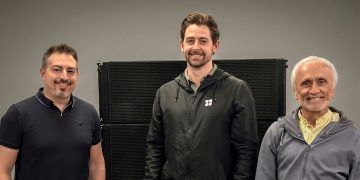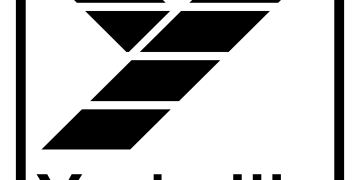 Antelope Audio has announced several new hardware-based FPGA FX models for its interfaces for the second time in as many months.
Antelope Audio has announced several new hardware-based FPGA FX models for its interfaces for the second time in as many months.
The latest update furthers the collaboration between Antelope and high-end preamplifier and EQ manufacturer BAE Audio, with two new EQ models based on its 1023 and 1084 equalizers. Four additional equalisers round out the update, which is already available as a free download for users of the Orion Studio, and will be available for Zen Tour, Goliath, and Orion32+ users later this month. Antelope’s interfaces bring vintage FPGA-based FX that feature near-zero latency performance and authenticity with the gear that inspired them.
In addition to the BAE 1023 and 1084, the new update will include recreations of early Austrian consoles of the 70s and 80s in the VEQ-STU 089, VEQ-STU 169, and VEQ-STU 900, as well as a beloved classic 4-band equalizer in the VEQ HA32C. These new FPGA-based FX will bring a total of 20 vintage equalizers to the Antelope Audio ecosystem. Other available vintage FPGA FX models include compressors and guitar and bass amplifier and cabinet models.
“The wealth of audio processing tools that are now available on many of our interfaces as FPGA FX transforms them into incredibly versatile sound-shaping tools,” commented Marcel James, director of US sales for Antelope Audio. “Not only are we making incredible vintage processing available to a wider audience than ever before, but we are recreating every nuance of these classic hardware units as faithfully as possible, capturing the qualities that made them the lifeblood of so many hit records.”
Based on a popular console tone-shaping EQ of the 70s, the VEQ-STU imbues classic analog character for subtle balancing or more aggressive sound sculpting. Featuring two variable features and a frequency-selectable presence knob, the VEQ-STU is a favourite for drum processing but lends an agreeable warmth to any track in a mix.
The VEQ-STU 169 captures the more transparent sound of second-generation Austrian consoles of the 70s and 80s. This 3-band inductor-based EQ brings a coveted musicality to tracks thanks to its smooth high end with ample headroom and its low-end clarity, with just a hint of analog coloration. Designed for broad tone shaping, the 169 has a low Q factor on its bands, which helps preserve signal integrity in the lower frequencies. A switchable high-pass filter eliminates unwanted bottom end, while high and low shelves at 10kHz and 60Hz respectively help position tracks in the mix. A sweepable midrange band ranging from 150Hz all the way to 7kHz provides flexibility for shaping the sound.
The VEQ-STU 900 captures the most advanced implementation of the classic line of console EQs, offering another level of control. Notable for its ability to dramatically shape a signal without deforming the sound, the 4-band semi-parametric EQ with high and low-pass filtering offers a range of frequency selections and two filter shapes at each frequency selection. The high and low bands can be switched between shelving and bell modes, while the low-mid and high-mid bands offer two different bell Q options.
Featuring a similar front-panel interface and functionality as the VEQ-STU 900, the VEQ-HA32C brings a whole different range of colors to the tracking and mixing process. Based on one of the richest and most uniquely characteristic 4-band EQs, it lends musical analog character to everything from guitars to bass to drums to vocals. It imbues a desirable high-end smoothness while maintaining clarity in the mids and lending thickness to the lows.
The BAE Audio 1023 models a classic 70s British equaliser known for granting its studio magic to any audio that passes through it. Using the same core internal circuitry and coveted transformer path as the vaunted 1073, this variation adds five additional frequency selections in the mid band and four in the high band, allowing unique tonal possibilities as the two bands gain the ability to overlap and play off one another.
The BAE Audio 1084 is synonymous with the fat, vintage sound of classic British consoles. The engineering of the original hardware is modeled to deliver a smooth high end and a big low-end. Even a large boost at 220Hz will not result in unpleasant muddiness. With similar functionality to the BAE Audio 1073, the 1084 adds a useful low-pass filter, as well as a switchable Hi-Q button for its midrange band that allows more precise boosts or cuts at one of the six carefully selected frequencies.



























Looking Back on 2025: A Year of Controlled Chaos (Emphasis on “Controlled”)